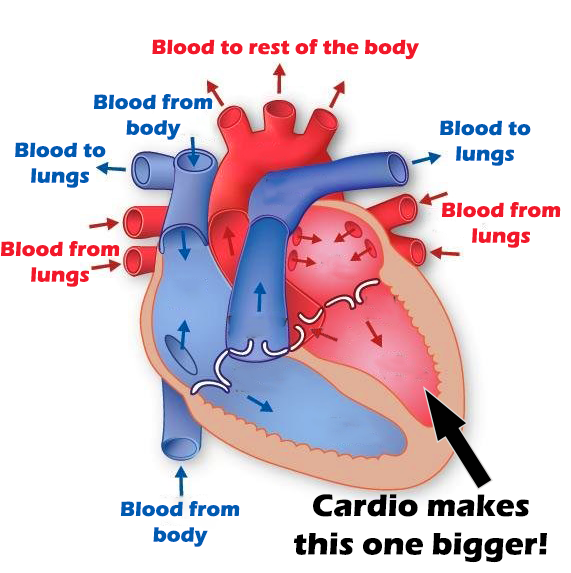Cardio Isn’t Spanish; It’s Necessary
A couple of weeks ago, I wrote an article detailing some of the things fighters get wrong in the gym. One of them was not having a real strength building program. Another was how they often neglect slow cardio. You’re probably dying to know how I’d go about fixing this, so why keep you waiting to hear my brilliance (and humility.) Yes, it’s true that you won’t step into the cage, ring, or onto the mat and then go run around for a couple of hours. So why do cardio at all if you’re not a marathon runner or long distance cyclist? Great question, I’m glad you asked.
Don’t worry, I’m not asking you to consider them role models
Slow steady cardio, the roadwork that old school boxers do, is meant to build your aerobic energy system. I know, I said “aerobic,” which probably conjures up images of people in the 80’s on TV wearing spandex, doing step exercises and bad dance moves, shouting things like “feel the burn.” That is not what I’m talking about. When I say aerobic, I mean it scientifically: using oxygen as the main way to make ATP to be used as energy. This energy system (there are two more that we’ll look at in future articles) is the one that takes care of low intensity, long duration activities like marathon running or cycling. This is not the one you use for throwing knockout punches or really going for the submission.
You might be thinking “If it doesn’t help me move faster or have more powerful bursts, what does it matter then?” You’d be right to wonder that. True, it doesn’t make those two things better. What it does do, however, is help you recover so you can do those things more often and with less of a drop in power and speed after each burst. Having the aerobic system developed well means you can still throw those hits as hard and move in and out as quickly in the last round as you did in the first. It also means that during the one-minute rest between rounds, you’ll be fresher and ready for the next round instead of still huffing and puffing. On top of that, it also helps you recover between training sessions, making you able to push harder during each one. All of a sudden the aerobic system is starting to sound important, isn’t it?
So, how do we make it better? There are basically two ways to improve your aerobic system: improve fuel economy and make your gas tank bigger. We’re going to cover the second one and this is where cardio comes in. It makes your gas tank bigger by making the chamber of your heart that pumps blood to the body bigger, kind of like how a balloon gets bigger after you stretch it over and over again. When that chamber is bigger, it means that you send more blood to your muscles and clear out more waste products with each beat. You’re more efficient at carrying things to and from the other parts of the body, especially your friend oxygen.
OK, enough of the why. Let’s get down to how to literally put this into practice. The good news is that it’s actually pretty simple. You’ll keep your heartrate between 130 and 150 beats per minute. Do this for 45-75 minutes, two to three times per week. If your rounds are three minutes, then go toward the lower end. If they’re five minutes, go toward the higher end. Same thing if you do three rounds or five rounds. Again, the longer your fights last, the more cardio you need. That’s, at most, 3.5 hours per week. You probably spend that time watching highlight reels on Youtube. I’m sure you’ll find time to get this done. What exercise or equipment should you use? Any traditional cardio equipment is fine: treadmill, exercise bike, rowing machine, stair machine, etc. You can also go outside and run, bike, or (my personal favorite) throw on a weight vest and go for a walk. I usually recommend the exercise bike that you can also use your arms on as well because it’s easiest on your joints. You’re already doing all that fight stuff, the last thing you want is more wear and tear on your joints.
Try this for eight weeks and you’ll notice you get tired less easily and when you do get tired, you bounce right back. You can thank your new and improved aerobic system for this. There are other methods to develop this system, but we’ll look at them in future articles. For now, get yourself on a bike or a track and start putting in the roadwork. You’ll thank me in the last round when you’re still dancing circles around your wheezing, gassed opponent.
* The younger you are, the closer to 150 you should be. The older you are, the closer to 130 you should be.


